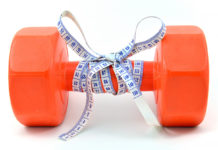Five times a day, approximately 1.6 billion Muslims worldwide bowing, kneeling and placing their foreheads on the ground towards the direction of the holy city of Mecca, Saudi Arabia. The Islamic prayer ritual, known as the Salat, the ritual is one of the five obligatory pillars of the faith set forth by the holy book, the Qur’an.
According to research at Binghamton University in New York, the repetitive physical movements of Muslim prayer ritual can reduce lower back pain symptoms and increase the elasticity of the joints. The study, conducted by scientists at Binghamton University in New York, they used computer-generated human models of healthy Indian, Asian and American men and women to look at the prayer’s effect on lower back pain.
The scientists found that the bowing portion is the most stressful on the lower back. But for individuals with lower back pain, performing proper knee and back angles during the ritual can alleviate pain. The angles are based on individual body shapes. It suggested that using a proper knee and back angle not only can effectively treat physical anxiety but also that proper knee and back angles can be an effective clinical treatment.

“The maximum compression forces created during prayer postures is much lower than National Institute for Occupational Safety and Health (NIOSH) safety limits, and the movements can be safely considered a clinical treatment for low back pain, as it requires different movements of the human body on a regular basis,” said Prof. Muhammad Khasawneh, from Penn State Behrend university in Pennsylvania. “Based on the pain level, a combination of back and knee angles can be identified.”
According to industrial engineering Prof. Muhammad Khasawneh, the complex physical movements of the daily ritual can reduce lower-back pain if performed properly and regularly. Prof. Muhammad Khasawneh and his interfaith group published their findings in the latest issue of the International Journal of Industrial and Systems Engineering and the paper was titled “An ergonomics study of body motions during Muslim prayer was evaluated through human modelling.”

“One way to think about the movements is that they are similar to those of yoga or physical therapy intervention exercises used to treat lower back pain,” said study co-author Mohammad Khasawneh.
While the research focused specifically on Islamic prayer practices, similar movements are also found in Christian and Jewish prayer rituals along with yoga and physical therapy. The kneeling posture, known as “sujud” can also increase the elasticity or mobility of the joints, but performing wrong positions, angles and movements can increase pain. It is therefore recommended that people spend more time in the kneeling position. Dr Khasawneh said that the angles are based on individual body shapes.
“Physical health is influenced by socio-economic, lifestyle and religious factors,” added Mr Khasawneh. “Prayer can eliminate physical stress and anxiety, while there is also research that indicates prayer rituals can be considered an effective clinical treatment of neuro-musculoskeletal dysfunction.”

Researchers also suggested that the further study is required to look at the effects on disabled individuals, those with more extreme body types and women — especially pregnant women, to find the best movements for these groups. The team plans to further validate the findings with physical experiments using sensors and cameras to track the stresses on the individual parts of human body during the prayer ritual.
“Physical health is influenced by socioeconomic, lifestyle and religious factors,” said Dr Khasawneh.
“Moreover, studies indicate that there is a strong association between prayer and vigilance about maintaining a physically healthy lifestyle.”

























